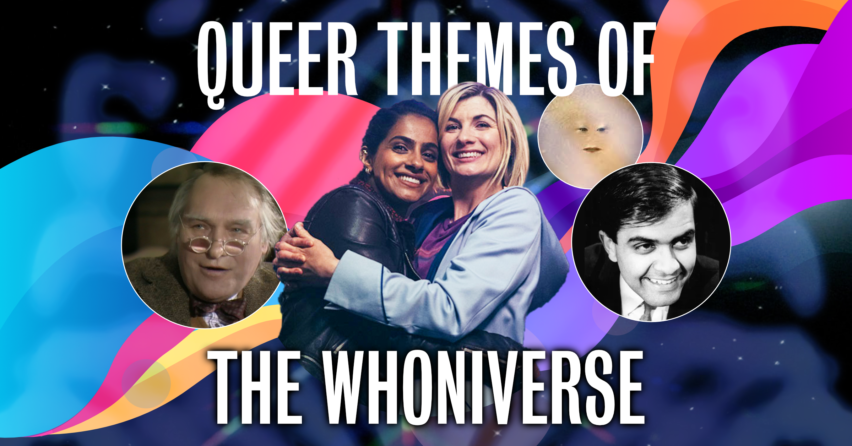Queer Themes in the Whoniverse
What on earth is the ‘Whoniverse’ and who resides in it? Well ‘Who’ is not only the question, it is also ironically the answer. It is the weird, wonderful and sometimes frightening place that the iconic and eccentric Doctor Who has all his, and most recently her adventures. Thus, if like all good Time-lords we jump in our Tardis and travel back in time, we can discover and explore the slow development of queer themes in the Whoniverse or DWU (Doctor Who Universe). This universe includes the spin off novels and comics from the series, and even the audio-play adaptions.

Our first stop is the early 1960’s, which unfortunately was a much less enlightened time. When Waris Hussein, during an episode of the ‘Fan Show’, was questioned specifically on LGBT issues, he stated that as Doctor Who was primarily aimed at children, ‘queer topics were not something that could readily be examined’. This is hardly surprising as this was during a time before homosexuality had been decriminalised, which wasn’t until 1967 in England and Wales.
It was highly ironic that in a show that featured time travel exploration, and was ahead of its time, that it should nevertheless be stuck in a time warp for two decades. Despite this, it is interesting to note that there were many people of ‘different sexualities’ who worked on Doctor Who over the years. In fact, Waris Hussein, who directed the very first episode of Doctor Who, was gay. It is also significant that the central character of the show, the Doctor, had a strong sense of moral justice and inclusivity, which in storylines often meant standing up for the underdog. The Doctor treats everyone in the universe as equal. This was seen, for example, in how the Doctor took sides with the ‘Thals’ who had been persecuted by the Daleks just because their culture were different.
It was with the Doctor Who adventure ‘The Curse of Fenric’ by writer Ian Briggs, that the first attempt at gay representation was made on the show, with the character Dr Judson.

However, the story was ultimately stopped as even in 1988 such a subject was still considered controversial, and for the same reason as before, this was after all a ‘family show’. The writer Briggs revealed many years later that the character Dr Judson, was meant to be based on Alan Turing. The intention of the story was to have a character who was struggling with his homosexuality (this was changed to a struggle with a disability). If we jump forward in time to the 90s in the novelisation of ‘The Curse of Fenric’ (this media was proved often to be an area in which there was a lot more freedom) the notion of men having feelings for other men is alluded to in the characters of Dr Judson and Commander Millington. The story in fact revolving around Millington’s jealousy of Judson’s affection for the same boy.
Then, in the Doctor Who story ‘Survival’, according to writer Rona Munro, there was a ‘lesbian subtext’ represented in the relationship between characters Ace and Karra. As such, there is the possibility that Ace could be the first onscreen LGBT companion, albeit with some ambiguity in the episode ‘Cat Flap’.
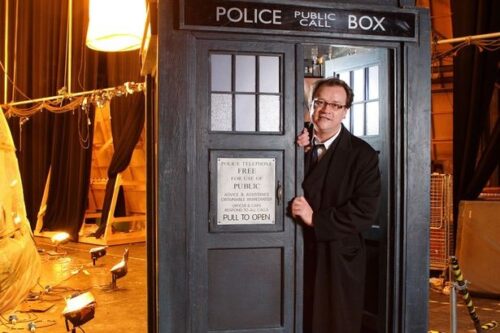
In 2005 the Doctor Who franchise, after an absence from our screens for many years (the series having been taken off air in 1989), was updated, rebooted and finally returned to the small screen. Russell. T. Davies, who had invented the character Vince Tyler, a Doctor Who fan in the ground-breaking T.V Series ‘Queer as Folk’ was now in charge. The series then had a more progressive attitude towards LGBT identities. In the shows premiere, the Doctor declares that a celebrity romance would never work as ‘He’s gay and she’s an alien’, this of course being the first use of the word ‘gay’ in the show’s history.
The next LGBT character that we encounter in our exploration of the Whoniverse is a somewhat controversial one: Lady Cassandra, a peculiar and bizarre character to say the least, who appeared in the 2005 episode ‘The End of the World’.
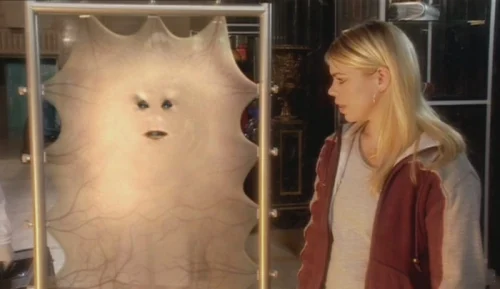
L. Cassandra is aristocratic in a comedic sense, and who after 700 surgeries has ultimately ended up with no body, has her brain in a jar and is now just a ‘tarp’ of skin stretched into a frame, which must be constantly moisturised. She has also successfully managed to prolong her life by thousands of years, but this has come at a price -a life of crime in which she has brutally slaughtered many of her fellow oligarchs. Cassandra, whilst reflecting on her childhood, briefly mentions, ‘when she was a little boy’. This was perceived as a trans-misogynistic gag about the obsessive and ‘elaborate’ nature of her surgeries. Writer Russell T. Davies said that it was meant as a satire on celebrity obsession with plastic surgeries, however, ultimately it misfired. The throw away gag about Lady Cassandra being transgender undersells what should have been a landmark moment. Furthermore, the character has been criticized as distasteful as we have here the ‘deranged transsexual killer’ which at this point in the history of trans representation in media, was an anachronistic stereotype.
The first unambiguously LGBT character in the series was in all probability Captain Jack Harkness. This was a character who didn’t seem to be bound by any traditional notions or boundaries of sexuality (perhaps could even be described as pansexual). Described as a dashing handsome rogue Time Agent, his ‘direct approach’ involved him kissing both the Doctor and his famous assistant Rose Tyler.
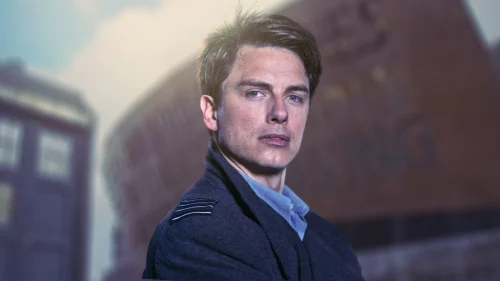
Mention should also be made of the spin off Doctor Who Podcast series ‘Redacted’. This series notably embraces female characters, in the wake of the show’s first female Doctor, and specifically embraces LGBT identities. For a start, the show has been written by trans woman Juno Dawson, who stated ‘it’s a real first for the Doctor Who Universe to have a cast that’s completely led by queer women’ –namely trans activist Charlie Craggs and also Lois Chimimba and Holly Quin Ankrah.
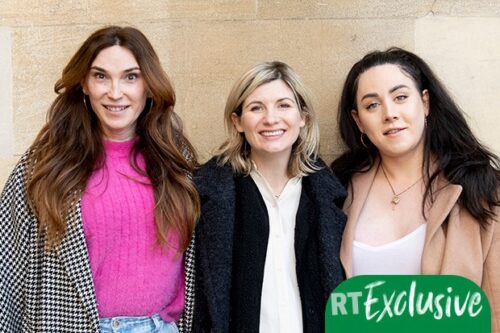
Doctor Who’s thirteenth Incarnation of the Time-lord played by Jodie Whittaker (being also the first female Doctor), recently broadcast a show that the fans were surprised and delighted by. The featured storyline addressed two female characters having feelings for each other in ‘Eve of the Daleks’ -the two characters in question being the Doctor and Yaz (Mandip Gill). In the episode, it is Yaz who admits that she has feelings for the Doctor. This moment of same sex attraction is a highly significant moment for LGBT representation, especially being portrayed in such a popular show.
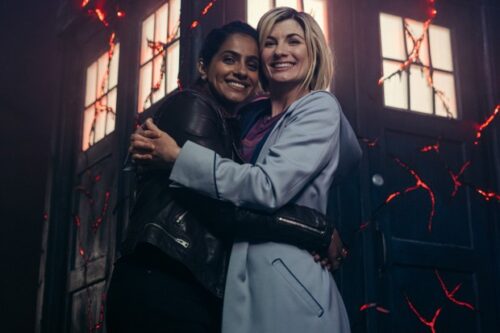
Finally, it should be mentioned that the series is about to make history by featuring the first black Doctor and the first black transgender actress Yasmin Finney who will star alongside Ncuti Gatwa.
